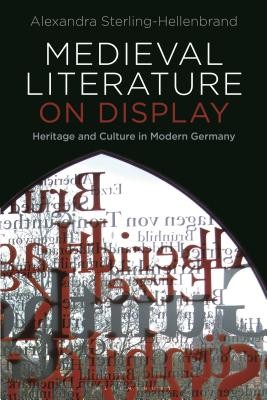
- We will send in 10–14 business days.
- Author: Alexandra Sterling-Hellenbrand
- Publisher: Bloomsbury Academic
- ISBN-10: 1788316894
- ISBN-13: 9781788316897
- Format: 15.6 x 23.4 x 1.6 cm, kieti viršeliai
- Language: English
- SAVE -10% with code: EXTRA
Reviews
Description
How is the medieval world depicted today? Two German museums serve as case studies for a vibrant, imaginative, and provocative enactment of twenty-first century medievalism: the Museum Wolfram von Eschenbach in Wolframs Eschenbach (1995) and the Nibelung Museum in Worms (2001). Emerging around the turn of the 20th century, the museums explore medieval German literature, cultural memory and local history. As the museums reconstruct and transform medieval narratives for the contemporary audience, they enact the process of medievalism: they reveal how memory, through the lens of the middle ages, shapes modern cultural identity and heritage.
Medieval Literature on Display thereby contributes to important conversations about medievalism's role in constructing and affirming cultural identity, in conceptualizing and finding places for the future of the past. This unique book is vital reading for scholars of medieval literature and historians of medieval Europe, as well as scholars of visual culture and museum studies.EXTRA 10 % discount with code: EXTRA
The promotion ends in 23d.05:20:04
The discount code is valid when purchasing from 10 €. Discounts do not stack.
- Author: Alexandra Sterling-Hellenbrand
- Publisher: Bloomsbury Academic
- ISBN-10: 1788316894
- ISBN-13: 9781788316897
- Format: 15.6 x 23.4 x 1.6 cm, kieti viršeliai
- Language: English English
How is the medieval world depicted today? Two German museums serve as case studies for a vibrant, imaginative, and provocative enactment of twenty-first century medievalism: the Museum Wolfram von Eschenbach in Wolframs Eschenbach (1995) and the Nibelung Museum in Worms (2001). Emerging around the turn of the 20th century, the museums explore medieval German literature, cultural memory and local history. As the museums reconstruct and transform medieval narratives for the contemporary audience, they enact the process of medievalism: they reveal how memory, through the lens of the middle ages, shapes modern cultural identity and heritage.
Medieval Literature on Display thereby contributes to important conversations about medievalism's role in constructing and affirming cultural identity, in conceptualizing and finding places for the future of the past. This unique book is vital reading for scholars of medieval literature and historians of medieval Europe, as well as scholars of visual culture and museum studies.

Reviews